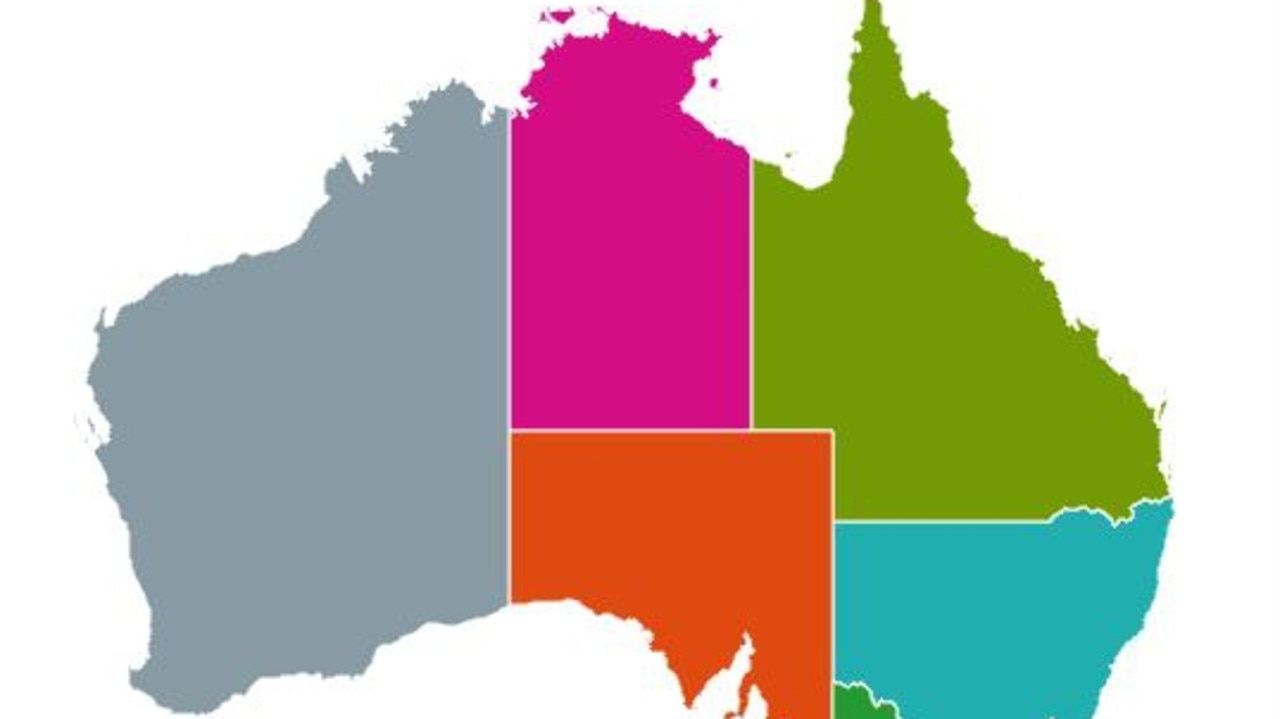This is where the jobs are in Australia
NEW analysis shows the areas where jobs are growing in Australia — and one state appears to be dominating the rest.

THERE’S one state that has dominated job creation in the past financial year — with a staggering 40 per cent of all new jobs located in NSW.
Corporate adviser Conrad Liveris has analysed Australian Bureau of Statistics employment data for his report Growth And Change: Australian Jobs In 2018.
He found the industries and areas where jobs are being created, and who’s doing it the toughest.
This is what he found.
THE BEST STATE TO GET A JOB
In the past financial year there was one state that dominated job creation, with about 40 per cent of all jobs created in Australia located in NSW.
This was followed by Victoria, where 23 per cent of jobs were created, then Queensland (21 per cent), South Australia (7.6 per cent) and Western Australia (6.6 per cent).
The Northern Territory, Australian Capital Territory and Tasmania have all seen relatively slow growth.
South Australia’s job growth has been above average in the past year but 80 per cent of the new positions were taken up by women, suggesting the rise of new industries. Women’s employment is also growing strongly in Tasmania.
However, in the last February-May quarter, South Australia recorded negative employment growth, along with Queensland. Job growth in NSW has also slowed.
Victoria had the strongest job growth in the February-May quarter.
There was also good news for Western Australia with 75 per cent of the state’s job growth taking place in the last quarter. But part-time work grew 7.7 times faster than full-time work in the past year.
Since 2015, only two states have had employment growth above the national average of 6.13 per cent — they are: Victoria (8.56 per cent) and NSW (7.57 per cent).
INDUSTRIES WITH THE BEST GROWTH
Two types of industries appear to be growing: personal services and those associated with construction.
Since 2015, the strongest growth in industries, by percentage, was in construction, financial
services and healthcare.
The actual numbers show that 193,000 healthcare jobs were created in this period, followed by 137,300 in construction and 76,500 in hospitality fields.
But if you only look at the past year, about half the jobs created have been in manufacturing — although the industry and type of work has changed.
Much of the growth is tied to the Federal Government’s increased investment in the defence industry and its focus on local manufacturing.
More long-term sustainable growth was seen in the personal services industry like healthcare, recreation services and hospitality.
IT’S HARDER TO GET A FULL-TIME JOB
The growth of part-time work continues and is impacting young people in particular.
In the three years between 2015-18, part-time work grew by 9.3 per cent compared to full-time work, which only grew by 4.62 per cent.
In the last financial year, even though more full-time jobs were created (making up 57.81 per cent of new jobs), part-time work still grew at a higher rate (3.18 per cent compared to 2.07 per cent).
Of the new jobs that people aged 35 and under took up, 70 per cent were part-time. This jumped to 90 per cent for those aged under 25.
Young women in particular, had the least success in getting full-time work.
It was a different story for older workers.

Mid-career workers were seeing more full-time jobs created while older workers had the highest gains in employment, both full-time and part-time.
Full-time work has been growing most strongly in NSW and Victoria, and weakest in Western Australia and Queensland, where part-time work has grown strongly.
Over the past financial year, recreation services, mining and professional services have seen the largest increase in full-time work; while retail and logistics have seen the largest declines.
Meanwhile, utilities, manufacturing and mining have seen significant increases in part-time work, while public administration has seen it decline.
MORE WOMEN ARE GETTING JOBS
Women have taken up almost 4000 more jobs than men in the three years between 2015-18.
They have been employed in about 199,000 new full-time jobs since 2015, compared to the 195,200 positions for men.
In this period, women’s employment grew by 7.75 per cent, compared to men’s by 4.69 per cent.
When looking at both full-time and part-time jobs, women got 186,000 new jobs — 60 per cent of the 306,000 jobs created.
In the past year, the highest growth for work for men has been in recreation services, real estate and public administration; while declines were seen in education and healthcare.
For women, growth was seen more strongly in utilities, mining and manufacturing; with declines in logistics.
Male employment has grown strongly in Victoria and Queensland, and was weakest in Western Australia, the Northern Territory and the Australian Capital Territory.
All states recorded strong employment growth in short and long-term measures for women.




